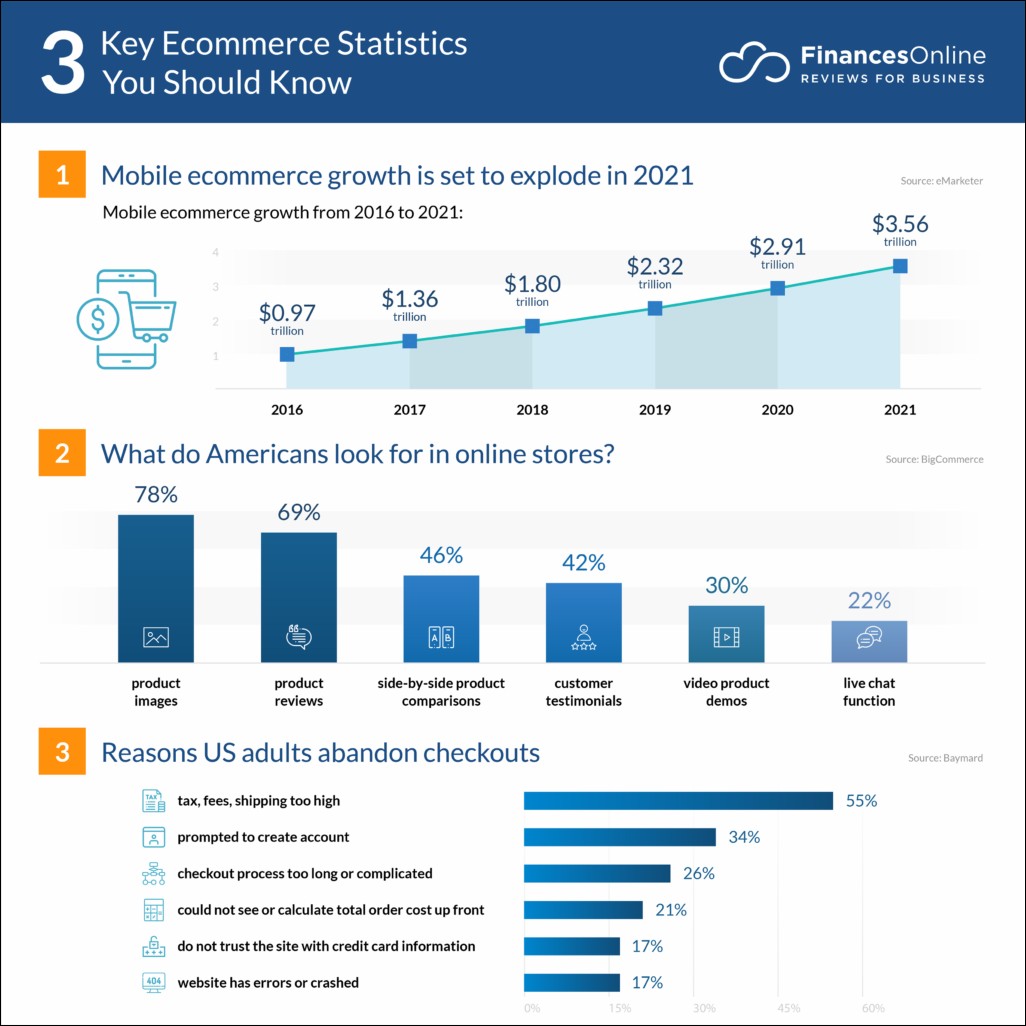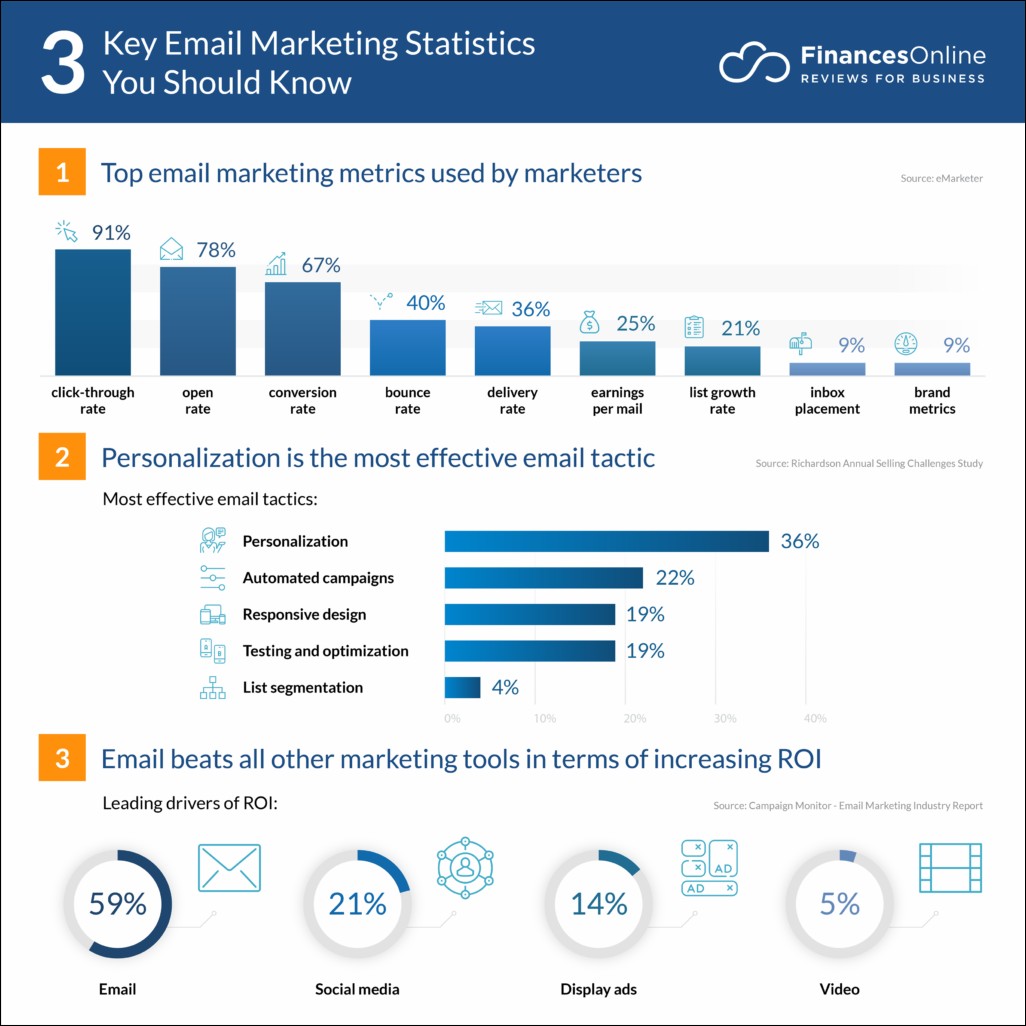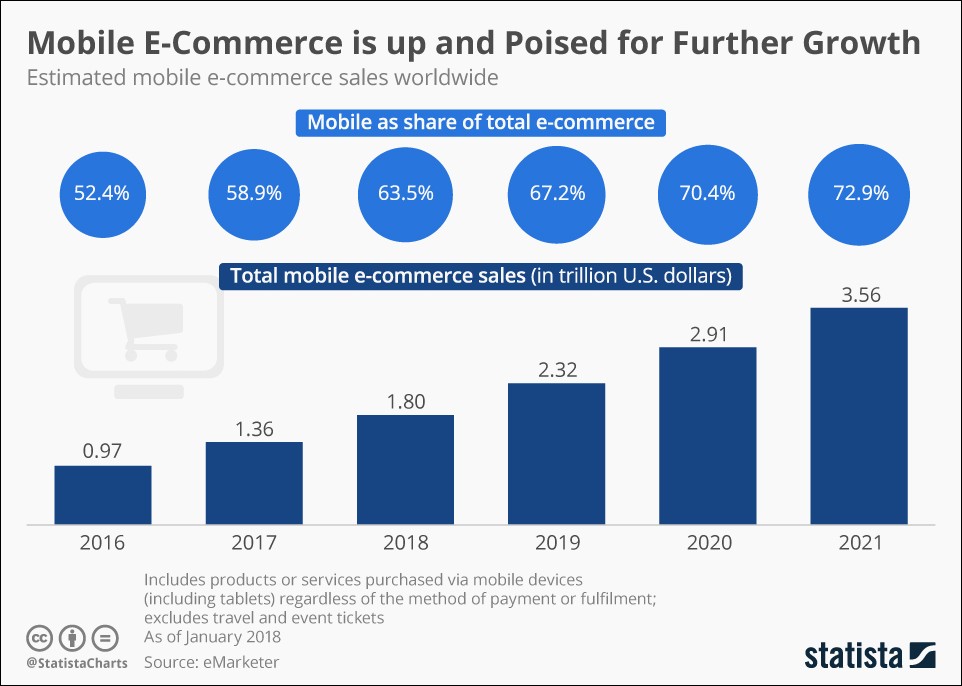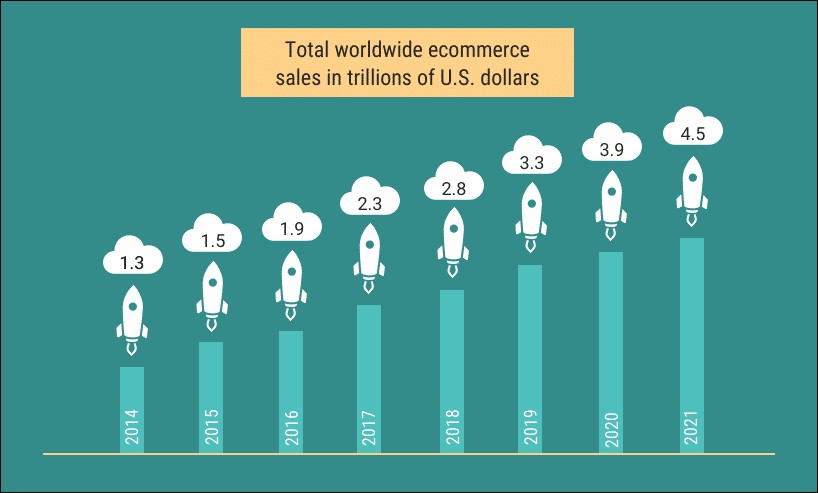31 Essential Post-Pandemic Ecommerce Statistics
Table of Contents
E-commerce is taking the world by storm. As the pandemic made us more reliant on the internet and social media, our shopping habits have become more reliant on those too. And we’ve got the latest eCommerce statistics to show it!
General Post-Pandemic Ecommerce Statistics

- The number of social media users is expected to grow up to 226 million by 2024.
- 60% of businesses and brands intend to increase their Instagram budget in 2021. Approximately 30% of businesses intend to do the same for Facebook, YouTube, and LinkedIn.
- Visa reports in their analysis that around 1 out of 4 purchases are now conducted on social media.
- New user acquisition is the top priority for 73% of marketers in 2021, rising from only 46% in 2020.
- Around 90% of customers are in favor of brands that provide relevant and updated information related to the pandemic.
- Another interesting eCommerce statistic is that there was a whopping 170% increase in the sale of luxury goods in late 2020.
- Online shopping has increased by 62% in the United States thanks to the pandemic.
Must Check: Fascinating Post Pandemic Marketing Trends and Statistics
Email Ecommerce Statistics

- The popularity of email marketing is rising slowly but surely, as Statista reports that 61% of customers would choose to be contacted by brands via email.
- Companies are taking note of that rising popularity too. Smart Insights report that more than half (58%) of the top 1000 retailers in the U.S. send Welcome Emails to new customers.
- Similarly, Barilliance reports that marketers can increase their email conversion rates by 189% just by using personalized email widgets.
- Furthermore, a survey conducted by OptinMonster noted that email is the most successful marketing channel for approximately 80% of B2B marketers.
- In addition to that, around 78% of marketers rely on email marketing as a tool to help segment their customers and to send more customized content to subscribers.
- Additionally, Campaign Monitor reports that including interactive content in your email campaigns can increase their click-to-open rates by 73%.
- Likewise, around 90% of B2B marketers use email as their distributor channel, only falling behind to social media by 2%.
- Moreover, experts estimate that the number of email users will grow to a whopping 4.48 billion by 2024.
- Nearly half of consumers (42%) tend to use their mobile devices for checking their emails, compared to only 18.2% on desktop and 39.8% on websites). That’s why device optimization is incredibly important!
- Emails have a 90% penetration rate for customers in the United States, which is significantly higher than the 69% for Facebook.
Must Check: Learn more about Ecommerce Email Marketing
Mobile E-commerce Statistics

- Simicart reports that mobile eCommerce sales will account for more than half (53%) of total eCommerce sales by the end of 2021.
- Moreover, people are undoubtedly using their mobile devices more and more as time goes by. The average time spent by consumers on their mobile devices in the U.S. has increased from 188 minutes in 2016 to 234 minutes in 2021.
- Additionally, Marketing Land reports that mobile websites have a 3x higher conversion rate than their desktop counterparts.
- Around 80% of customers choose to use a mobile phone even inside a physical store to look up reviews, compare costs or find alternate stores before making their purchase.
- Mobile commerce is expected to increase to $418.9 billion by 2024 in the United States.
- Approximately 1 billion people use their phones for mobile banking all over the world.
- The mobile coupon industry is expected to grow by 56.6% worldwide by 2025.
Must Check: Essential Ecommerce Marketing Strategies to Enhance Your Marketing Metrics
Digital Marketing Ecommerce Statistics

- Nasdaq estimates that by 2040, 95% of purchases would be conducted online, making traditional physical stores virtually redundant.
- Wunderman Thompson Commerce reports that 43% of all consumers now feel more comfortable shopping online.
- Moreover, around 94% of internet users worldwide have already made purchases online.
- A social media presence can make a huge difference when it comes to eCommerce. BigCommerce reports that brands with a social media presence have 32% more sales than those who don’t.
- Facebook has a stronghold on eCommerce too. Shopify reports that Facebook accounts for 85% of total orders from social media sites.
- In addition to that, Instagram is not too far behind. Locowise reports that 75% of Instagram users have made purchases after coming across an advertisement on that social media platform.
- Similarly, Smart Insights reports that 53% of consumers prefer to shop on brand-specific apps on their mobiles or tablets.
Read more: 6 Essential E-commerce Marketing Trends to Skyrocket Your Sales
Conclusion
E-commerce marketing is undeniably on a significant rise. And we hope this article was able to help you see the growth of eCommerce across different brands and timeframes.
Want to learn more about eCommerce marketing?
Also, check out these related reads while you’re here!
- 16 Unbelievably Useful E-commerce Marketing Tools You Need ASAP!
- The E-commerce Conversion Rate Optimization Guide
- Why Product Recommendation Quizzes Drive E-commerce Sales in 2021?
- How to Create E-commerce Recommendation Quizzes Like A Pro
Perhaps you’d like to experience Outgrow’s tools and features for yourself! Sign up for FREE with Outgrow now, to boost your lead generation and conversion rates with interactive content!

Ruchira Asiwal is a Marketing Strategist at Outgrow. On her days off you can find her seeking some general knowledge about everything that catches her eye or reading fascinating books that blow her mind.



